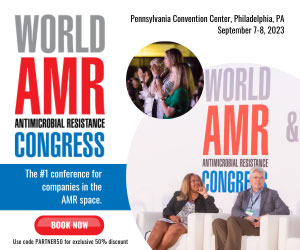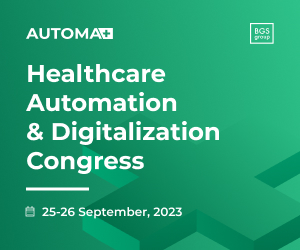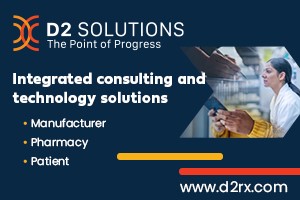Culture is like the wind. It is invisible, yet its effect is palpable. When the wind blows in your direction, things are smooth. When you feel the headwinds, movement is more difficult.
Why is culture the big buzz word in so many organizations?
Are leaders, owners, CEOs, mangers realizing that people are the most important asset they have in their business and organization?
Are organizations realizing that KPIs and metrics aren’t the only ingredient to growth, development, and a thriving business?
We have all been talking about the impact that the pandemic had on our life: personal, professional, physical, mental, emotional. We are rowing harder and faster to regain momentum and speed- to make up lost time, revenue, and marketplace position.
What became so apparent as we have emerged through the past couple of years is the importance and recognition of human connection. As human beings we are hard wired to connect through conversations. When we connect and develop trust, we release hormones (oxytocin, serotonin) that feed the trust. When we experience distrust in our connections and relationships, we activate our fight or flight response. During this protective state we release hormones, the most prominent is cortisol. I am quite sure you have all experienced what you feel when you are having a conversation with someone and you feel connected, in sync, trust is developing. Conversely, when you are in a conversation where there is defensiveness, resistance, fear distrust is present, you may even feel unsafe. The pandemic deeply interrupted the type, frequency and thus the impact that our conversations had on others, specifically in our work life.
How does this relate to organizations or business culture? According to a Quantum Workplace Survey, 65% of employees say their company’s culture has changed since 2020; 35% say their culture changed dramatically and 66% of the employees their culture positively impacts their work and behavior every day.
The disruption to our work that has continued in different ways continues to uproot the balance that existed between employers, workers, values, expectations, creating an increased sense of uncertainty, ambiguity and questioning of ones value in their organization.
Leaders are shifting, reflecting, retooling their organizations and businesses including a deeper exploration of culture. How then do leaders help right the ship with so many moving parts and dynamics?
At the end of 2022, the US Surgeon General released a document providing framework for Workplace Mental Health & Well-Being. While this is not the entire solution it does identify 5 essential elements that help support a framework for leaders to begin transforming, retooling, nurturing their organizational and business culture.
As with any framework, many of the concepts can overlap one another and thus support and build on what is desired for the end result: organizational culture that is valued and thriving.
This article is meant to bring each component to life with examples that you can act on as you apply them in your daily life.
THE FIVE ESSENTIALS
PROTECT FROM HARM
This essential supports every human need: to feel safe and secure, physically, and psychologically.
When employees feel psychologically safe they feel free to speak up without fear of judgement or retribution. When workers feel physically safe, they understand that they are protected from harm whether it be with co-workers, customers, vendors, etc. Feeling safe and secure feeds a foundational element of TRUST.
What Can Do?
- Ensure that you have organizational Core Values that are alive. How? Define by descriptive behaviors relevant to the organization. This means they are not just a list wall hanging or in an employee handbook.
- Create conversations that matter- share perspectives, discuss the core purpose of the organization. Why does the organization exist?
- Leaders must lead the way on these transformational conversations. The most crucial step: Start by sharing a vulnerability with others.
CONNECTION AND COMMUNITY
This essential recognizes the importance of belonging and having social support, developing relationships built on trust and inviting collaboration and teamwork.
Given the chaos and fast paced work environments, it is prudent to be intentional about welcoming others, sharing tips, tools and strategies that help employees move forward. This also helps them understand and become connected to the organizational culture. Simple conversations that involved listening to understand rather than listening to respond are at the core of creating trusted connections.
What Can You Do?
- Ensure that you have organizational core values that are alive. Using and applying these descriptive behaviors to Notice and Nominate those who regularly demonstrate them
- During the onboarding period, generally the first 90 days, meet regularly with new employees, ensure there are no barriers that might be impacting their ability to acclimate to the culture
- After the traditional 90-day period continue to meet regularly using a specific meeting framework to guide the conversation which includes include 2 way- feedback. Leader to employee and employee to leader feedback.
WORK-LIFE HARMONY
This essential highlights the importance of feeling autonomous and having a choice of flexibility. This specifically relates to having options for work schedules, ensuring that there are boundaries between work and personal life including paid leave.
Admittedly, this has been one of the most challenging ones to find solutions for that meet the needs of the organization, employees and even customers.
Regardless of the impact that the pandemic had on work, every organization and its leadership must be clear and have regular conversations about the expectations of each position from the time of hire.
What Can You Do?
- Make sure that the position or role that supports the organization has clearly defined expectations leading to accountabilities, these include the required behaviors that bring core values to life as well as other performance measures.
- Ensure that the conversations you have about work-life balance issues are candid but caring.
This is where communication issues can come back to cause waves that lead to distrust and malcontent.
MATTERING AT WORK
This essential hits to the heart of feeling and sharing purpose at work. The sense of being respected and valued. Engaging workers in decisions, including recognition and acknowledgement.
What Can You Do?
- Build a culture of gratitude and recognition. This can be done Identify primary and secondary key motivators using a tool that assists leaders and mangers in meeting their employees where they are. Providing and blueprint for essential conversations.
- Connect their work to the core purpose of the organization- the mission
- Provide a wage that is consistent with the duties, accountabilities of that position/ role, including the required behaviors that define the core values.
OPPORTUNITY FOR GROWTH
This essential brings the attention to the importance of learning, growing and accomplishment.
Remember many medical and healthcare organizations don’t always have the infrastructure to support traditional “ladder climbing.” Thus, growth and development can be accomplished in different ways., such as delegation, mentoring or a small component of a project that challenges the growth of that individual, challenging motivated employees to help co-create projects with a relevant purpose to both them and the organization.
What Can You Do?
- Leaders would benefit from growing themselves in simple coaching skills that help propel their employees and provide meaningful, impactful, and productive conversations .
The new breed of leader learns to lead with true coaching skills.
- Continue to engage in regular conversations that support not only the 2-way feedback, shared perspectives, but co- creating projects, ideas or other ways that support growth and development of employees. (Using the motivator tool to really find out where the employees at any given time help lead this conversation)
In summary
The world has changed, and organizations are challenged with attracting and retaining of top talent. This has led to a huge demand for workplace culture transformation, leading to the need for proven tools, framework, and community where leaders learn to embrace the process.
Organizations and their people must get back to valuing the fact that we hard wired to connect through conversations. These conversations develop and nurture relationships built on trust and create a “valued culture”
Carve out time to meet with your team collectively and independently…regularly .
Eliminate or redefine “traditional performance reviews” and insert growth and development discussions.
Embody vulnerability to start conversations, share perspectives, co- create solutions and innovative ideas as you use your core values to create a valued culture while the organization thrive and drives its performance and results.












